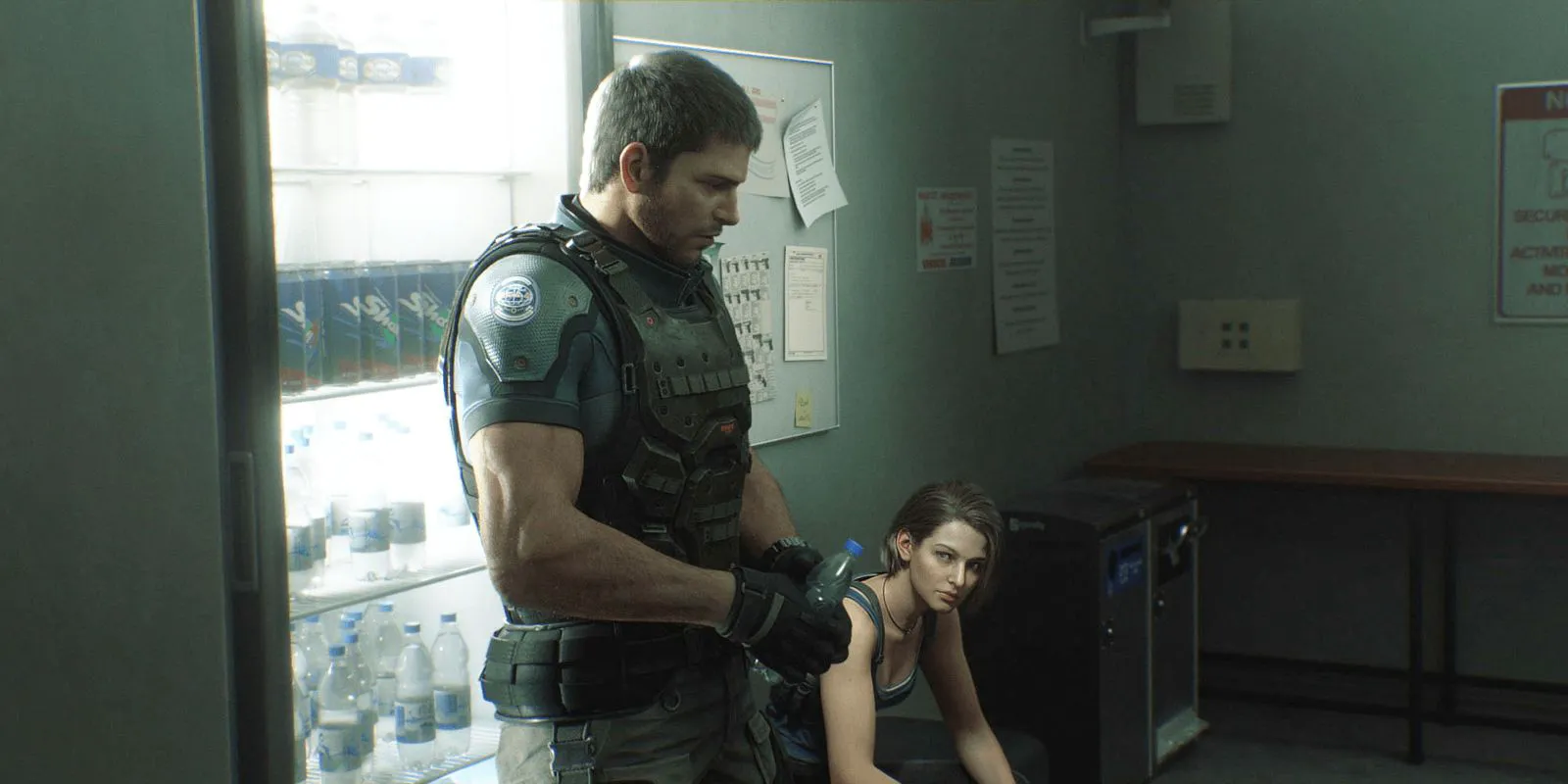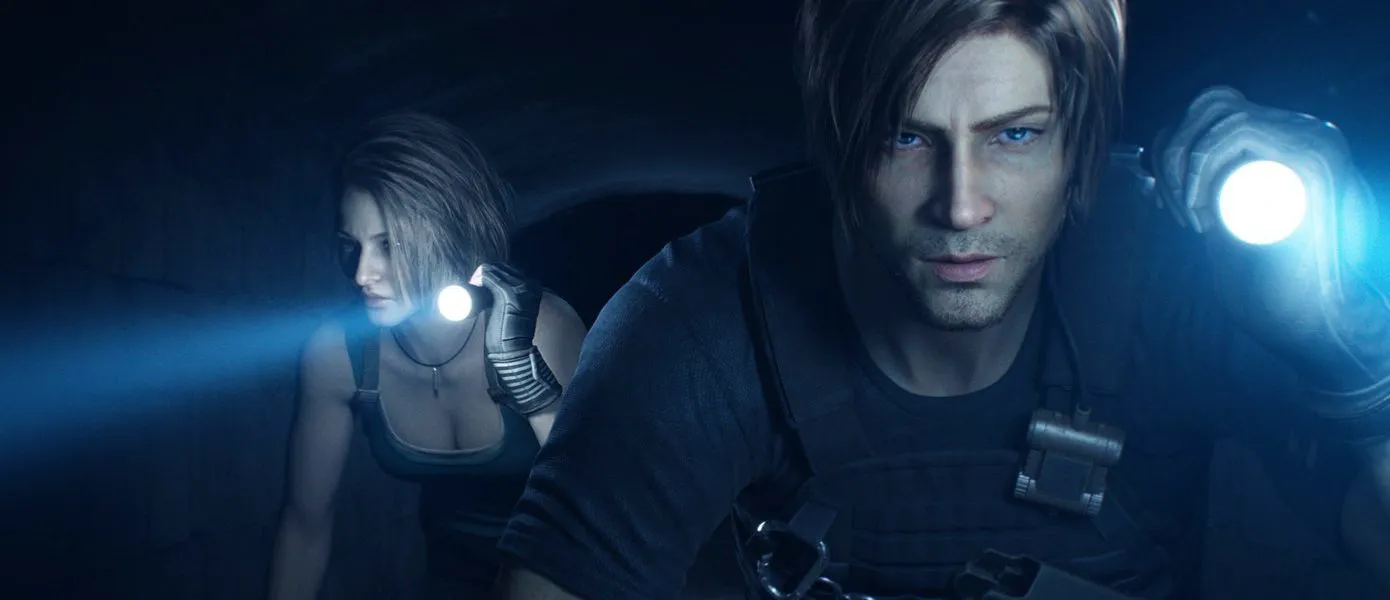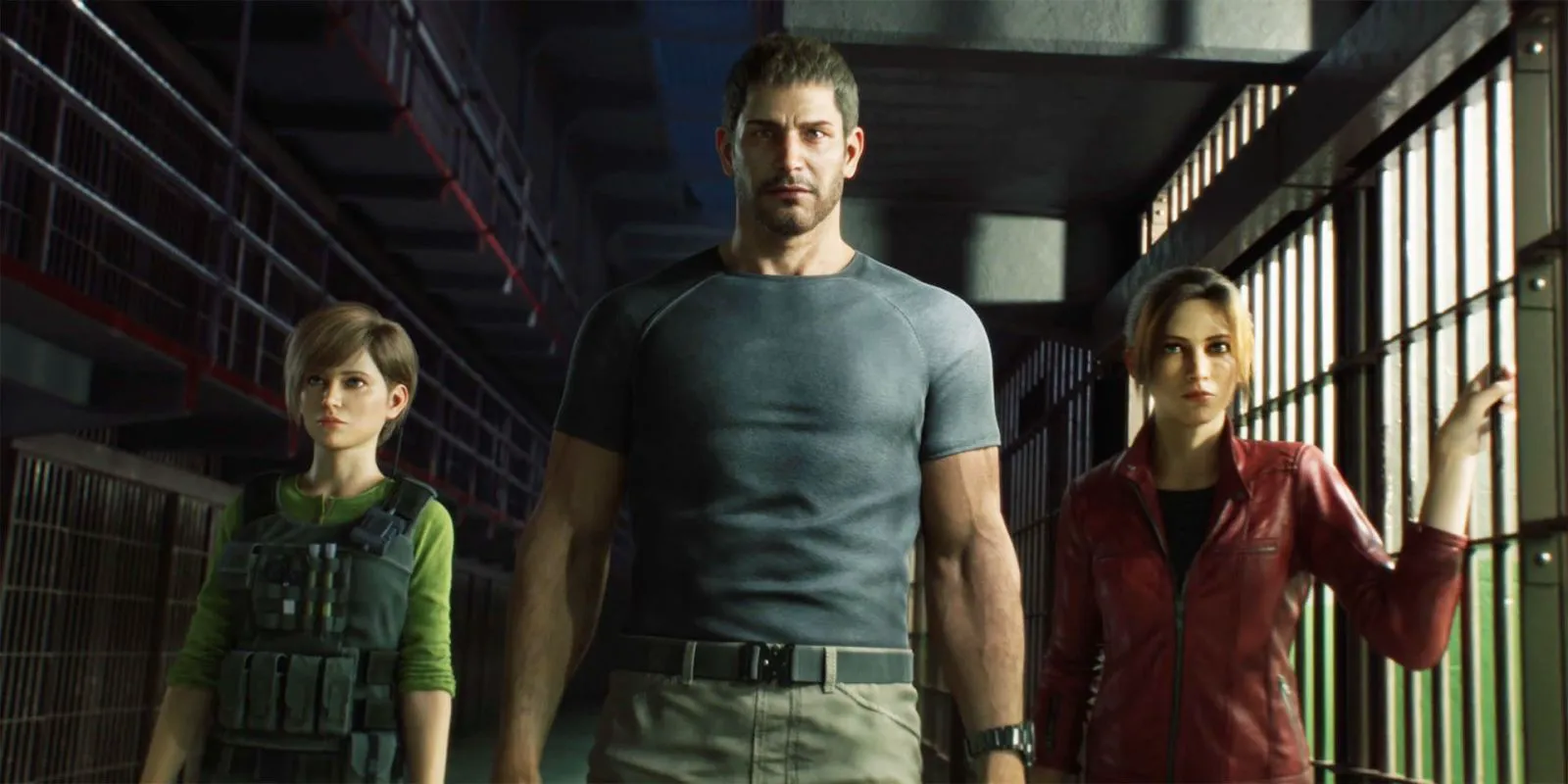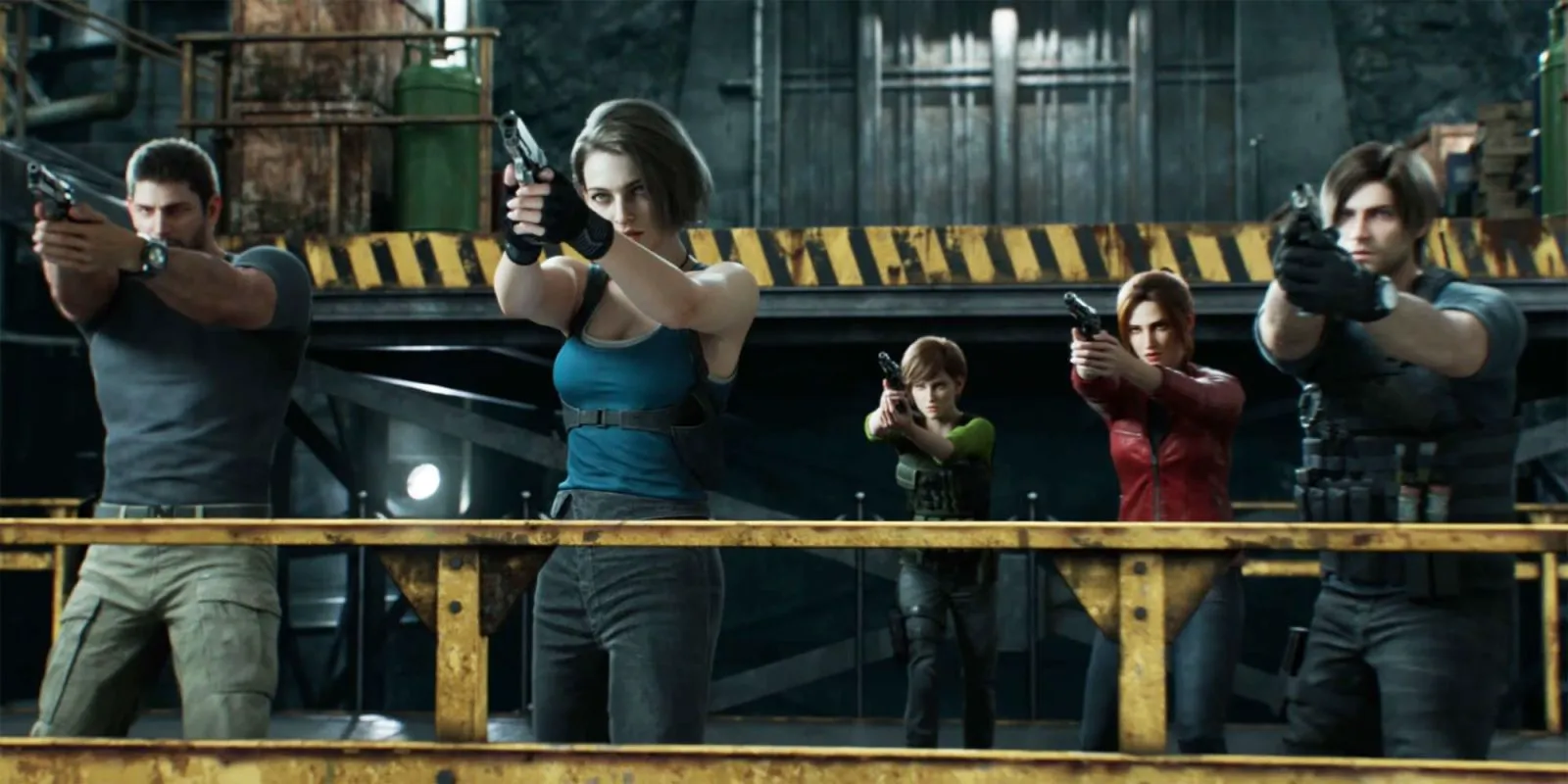For tourists venturing into the zombie virus-infested lands of “Resident Evil,” things might seem daunting at first glance. The franchise has accumulated such a dense layer of pop culture that only seasoned geeks can navigate the mutations of limbs and the chaotic plot branches. Games (numbered, unnumbered, remakes, and remasters), comics, CGI anime, and even a reboot in the form of a Netflix series (a failed one) – according to the lore, each new chapter builds upon a unified narrative of fighting corporations and biological weapons. But, frankly, there’s no need to delve deeply into the universe’s plasma; it’s enough to grasp the DNA of “Resident Evil”: blood, zombies, and the genre itself.

Frame from the animated film “Resident Evil: Death Island”
The Raccoon City Incident Revisited
It all started with Raccoon City… again. A flashback transports viewers to a rainy September night in 1998, when Leon Kennedy and Claire Redfield first met, and Jill Valentine played cat and mouse with Nemesis. Another elite squad was sent to rescue the top brass of the evil Umbrella medical corporation: after the mission, only two survived. Years later, the veterans of Raccoon City (besides Leon, Claire, and Jill, Rebecca Chambers and Chris Redfield also appear) unite to find out why a new iteration of the virus has emerged in Alcatraz prison.

Frame from the animated film “Resident Evil: Death Island”
Death Island: A Reunion of Heroes
Formally, “Death Island” is positioned on the timeline after the events of the sixth game and the Netflix anime series “Infinite Darkness.” Biohazard has left the confines of streaming, and in some places, the zombie adventure was even released in theaters before its online release (for example, in Singapore and Japan). Sony decided to follow Marvel’s method and assembled its Avengers to save the world once again (unfortunately, Ada Wong couldn’t attend, much to the disappointment of franchise fans). Jill Valentine gets a solo part: the protagonist of the first game, a daredevil, and a favorite among gamers, ultimately finds herself on the other side of the resistance. Jill was infected and acted against her will. However, knowing the details of her forced betrayal isn’t exactly necessary – the screenwriters kindly explain the background of each member of the rescue squad, so the viewer doesn’t get lost in speculation.

Frame from the animated film “Resident Evil: Death Island”
Themes of Guilt and Redemption
The central theme of the plot is the feeling of guilt, which drives Jill to seek redemption, and the new antagonist to seek revenge against corporations and everyone else. But, frankly, dramaturgy has never been the franchise’s strong suit: “Resident Evil” is the cradle of meme-worthy masterpieces like “Jill Sandwich” and aggressive battles with boulders. Therefore, the stated motivation, even if quite simple, can be considered a thorough elaboration of the plot. “Death Island” doesn’t try to pretend to be something new but follows familiar patterns with a good dose of courage and adrenaline. Leon Kennedy delivers corny punchlines by the stack, the Lickers make you want to sink into your seat, and the shot of Jill from behind makes you constantly reach for a phantom gamepad to practice dodging.

Frame from the animated film “Resident Evil: Death Island”
A Testament to Genre Purity
“Resident Evil” is surprisingly simple and straightforward in its genre aspirations, which is why it has stayed afloat for so long. Taking B-movie horror and George A. Romero’s risen dead as its genetic basis, Resident Evil may have moved from survival horror to spontaneous zombie action, but along the way, it didn’t try to rewrite its pedigree or mutate into a social commentary on biological, political, or capitalist threats. Current nightmares are used only to the extent that the ideas don’t interfere with the triumph of the pure, primordial genre on the screen, which is impervious to everything. Neither criticism, nor multiplying sequels, nor Netflix reboots.
“Death Island” is a dashing and fast-paced action film in which dynamics replace common sense, and epicness is directly proportional to the stupidity of the monologues. The line between grotesque, parody, or self-parody has long been blurred and doesn’t hesitate to neglect sanity. For years, “Resident Evil” has allowed the Japanese to good-naturedly mock Hollywood clichés: it’s no surprise that the series has reached the canons of Marvel, discarding superheroic arrogance and dramatic intensity. There are also winks to the loyal audience. In the finale, the authors of “Death Island,” Makoto Fukami (“Resident Evil: Vendetta,” “Resident Evil: Infinite Darkness”) and Eiichiro Hasumi (“Resident Evil: Infinite Darkness”), selflessly revel in the series creator Shinji Mikami’s penchant for rocket launcher salvos and go through the entire best arsenal of the games. Judging by the initial reactions, fans were satisfied; it’s difficult to recommend “Death Island” to others as an entry point into the universe: you can try it if you leave your expectations at the door. In any case, the Resident Evil universe is once again at the peak of demand: the successful remake of the cult fourth game and adequate B-movie animation once again show that the nightmare of Raccoon City will never end.